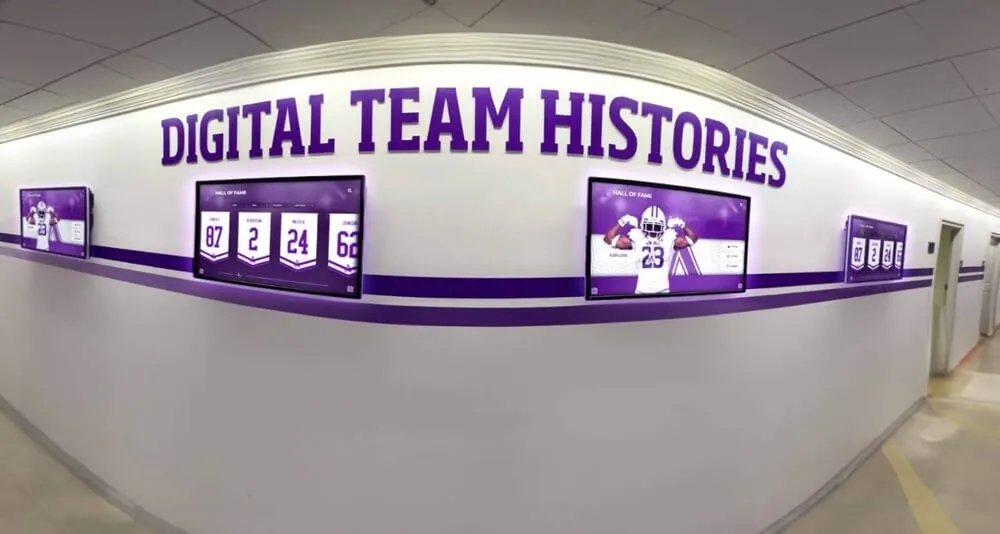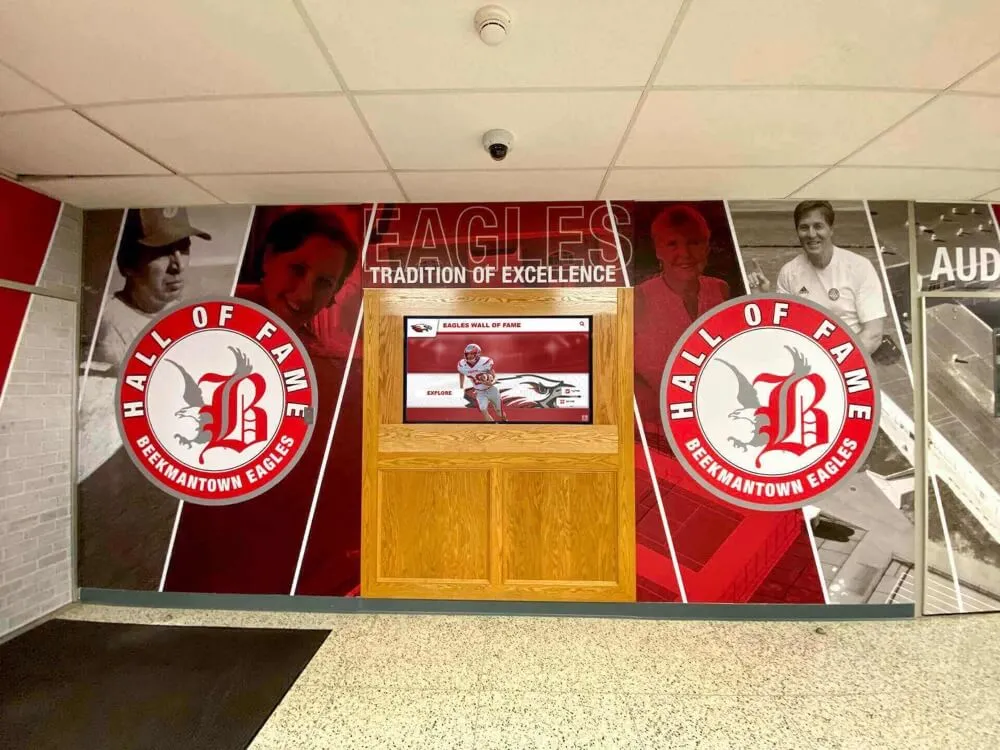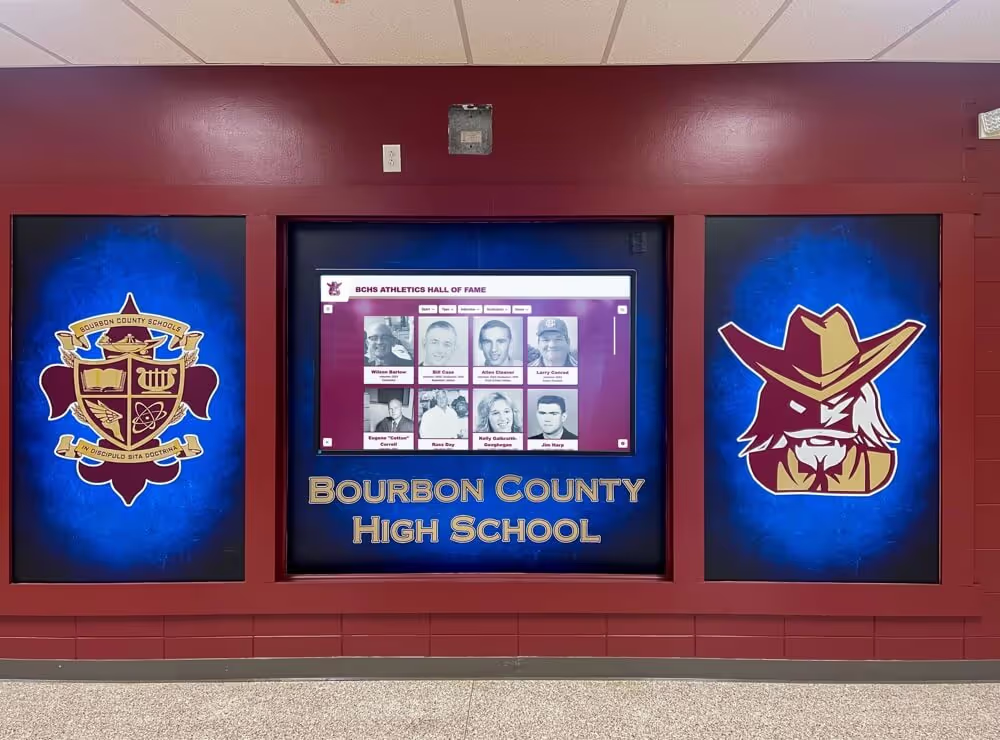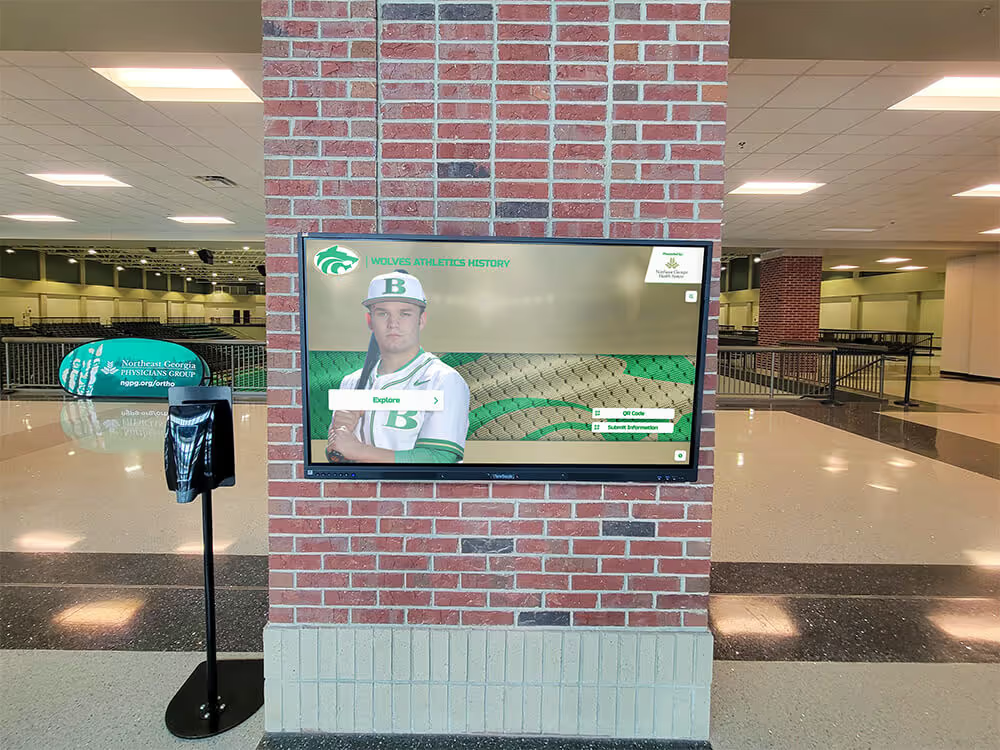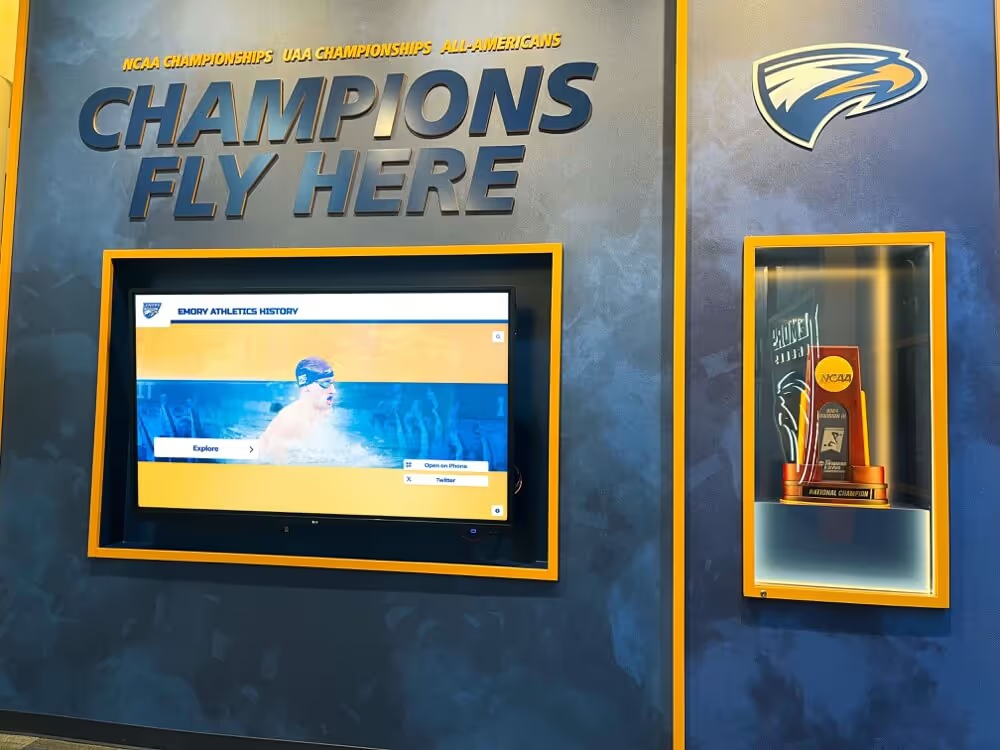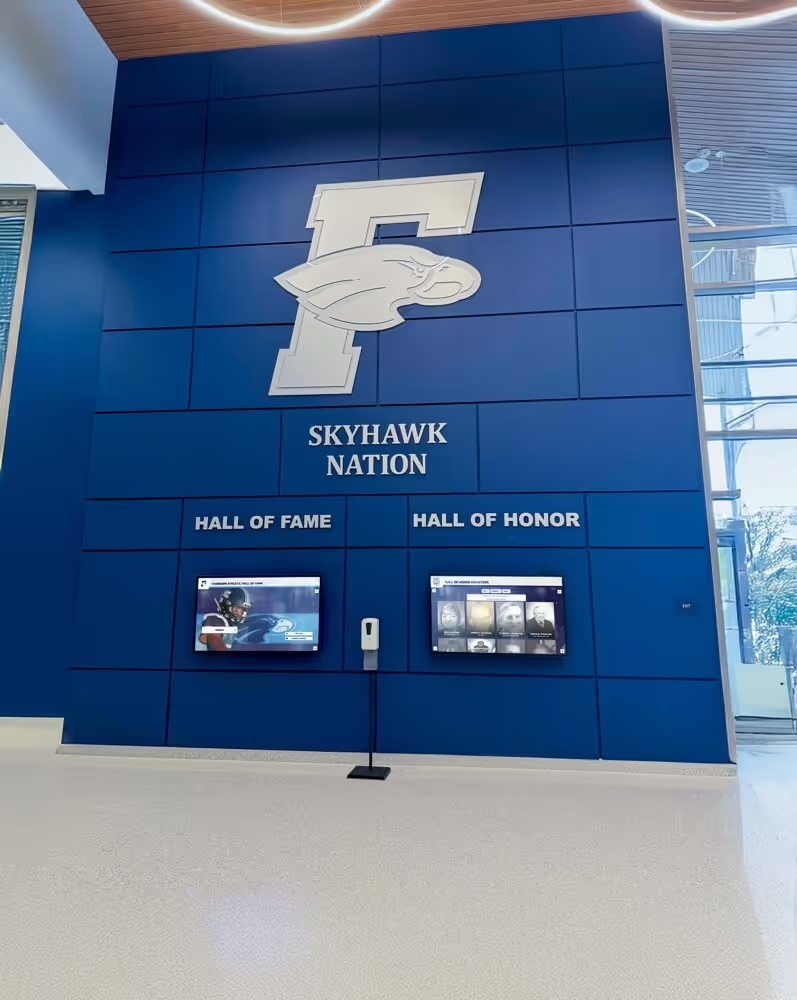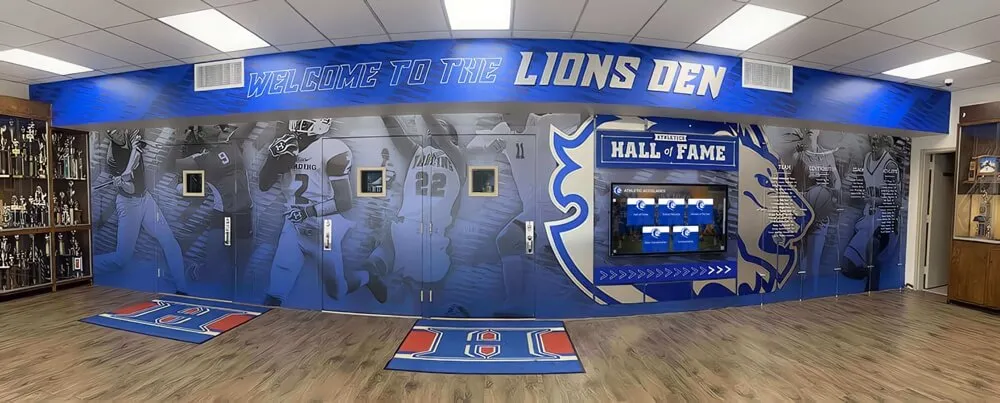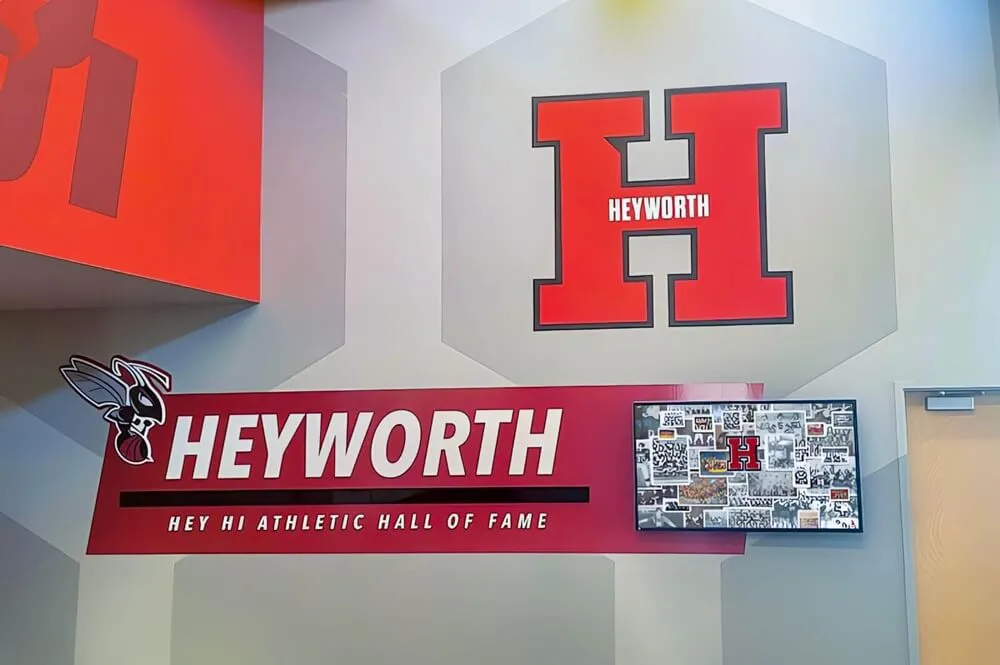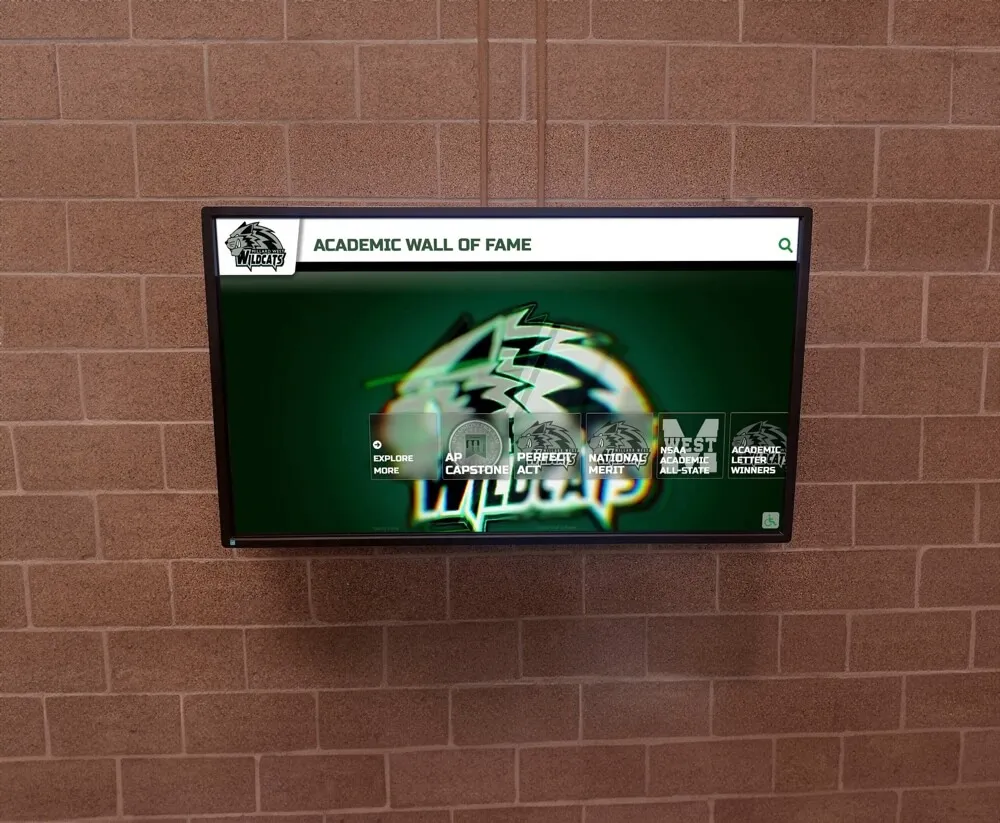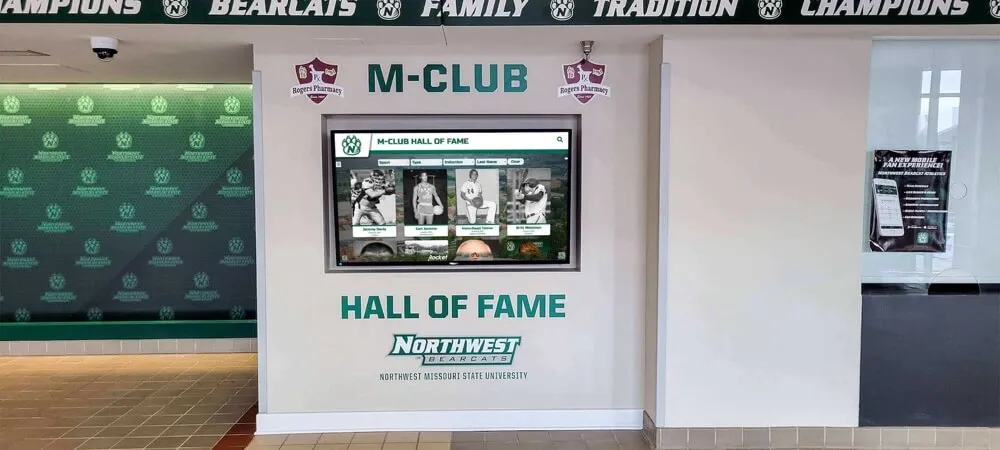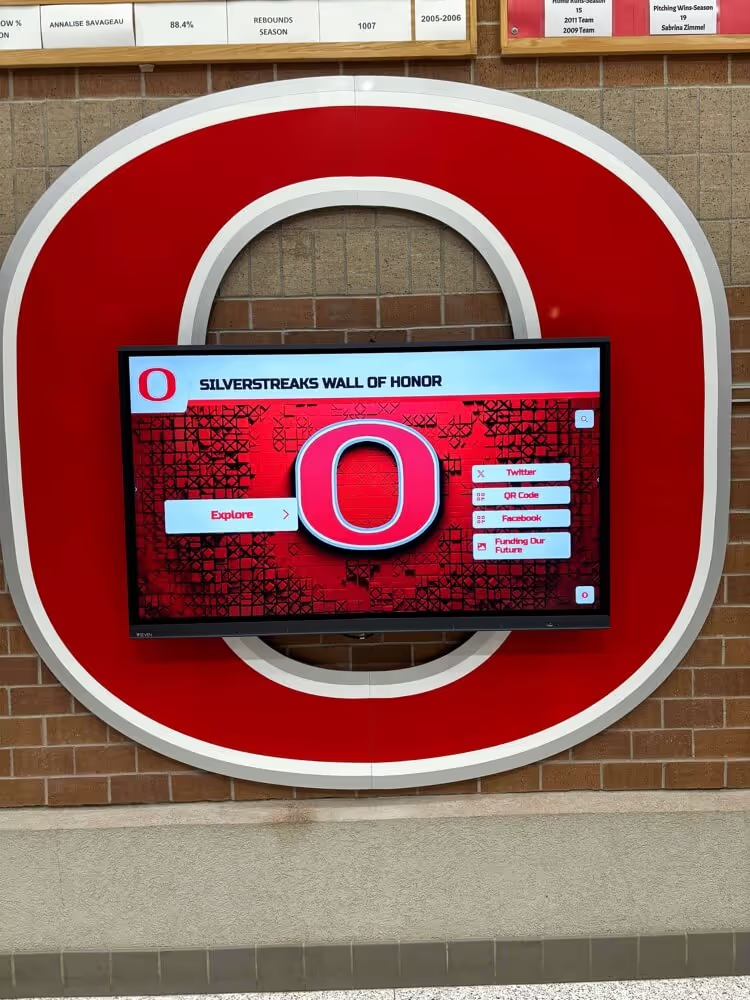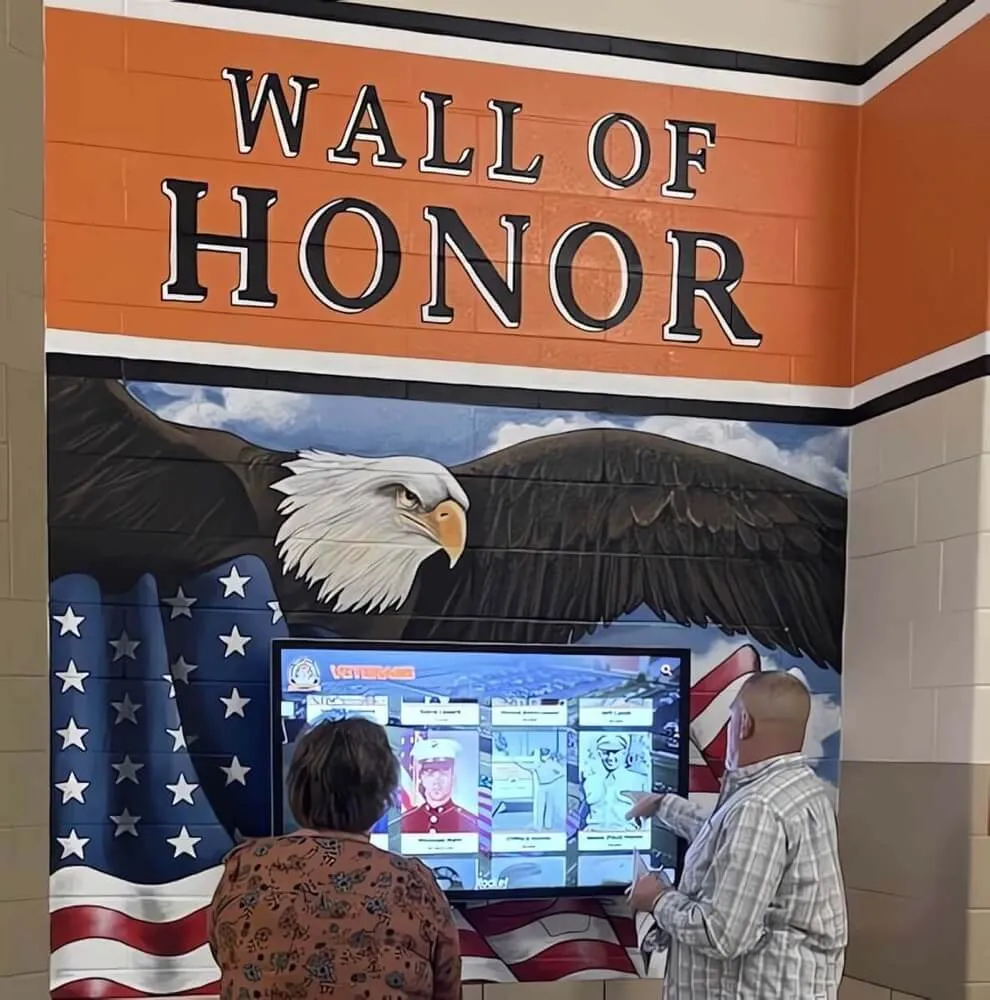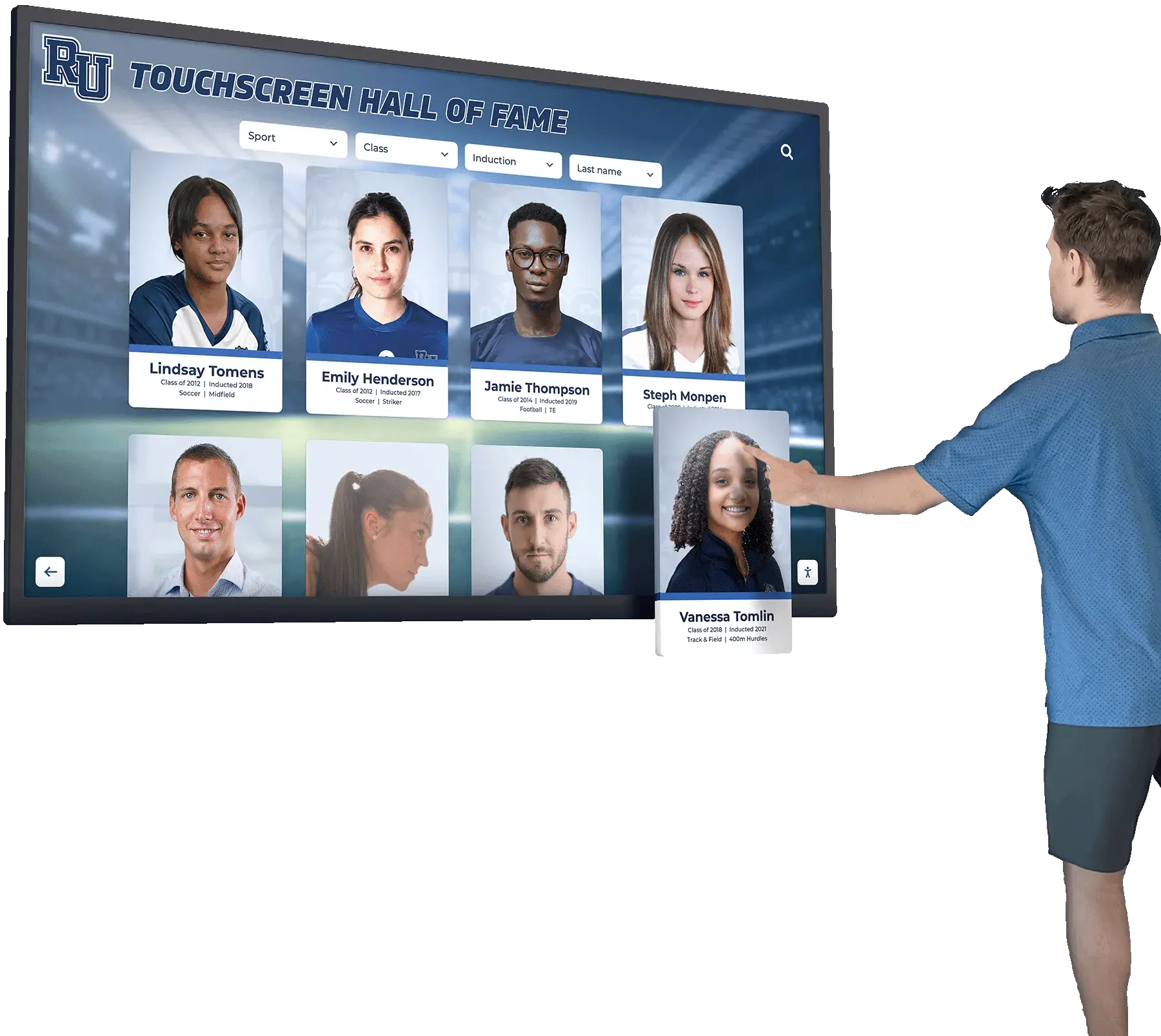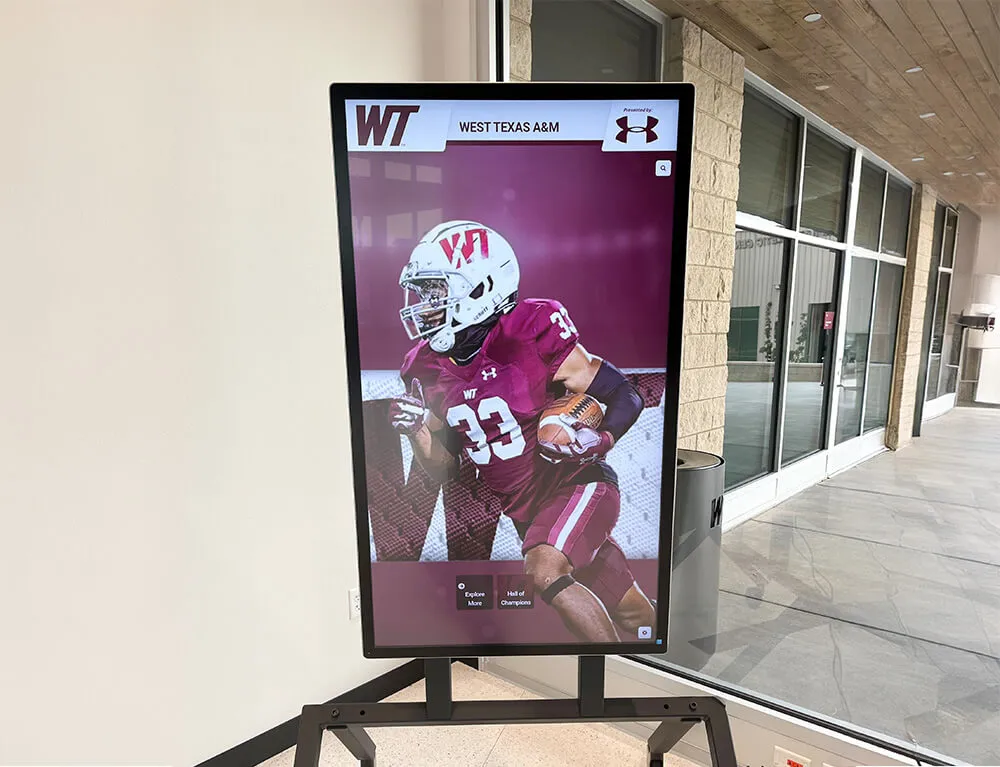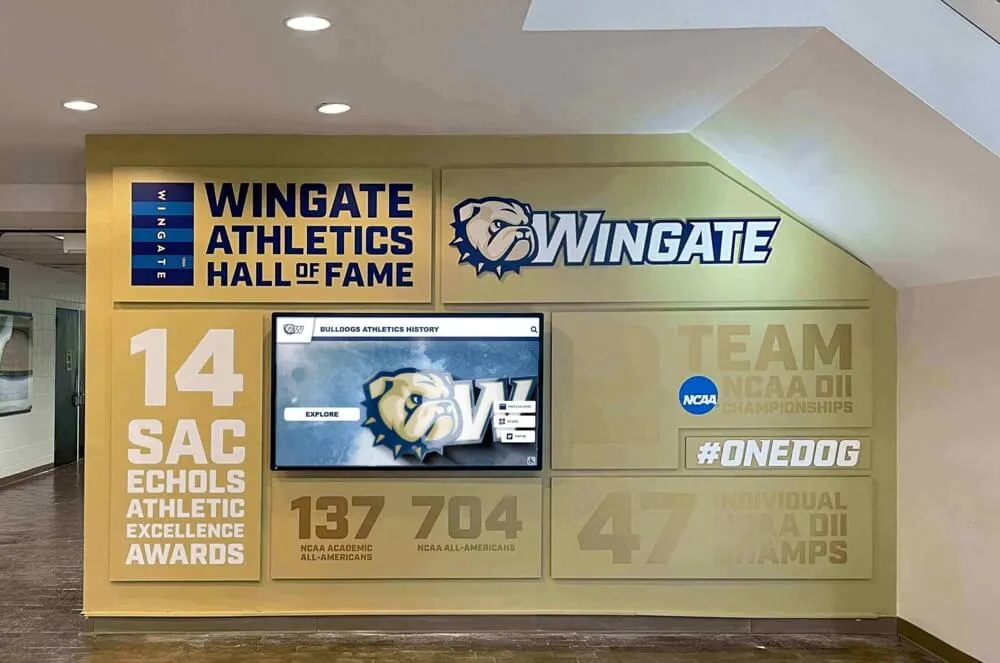Introduction: Why School Recognition Matters More Than Ever
Creating a strong sense of belonging in schools isn’t just about feel-good moments—it’s about fundamentally transforming student outcomes, staff retention, and community engagement. Research consistently demonstrates that students who feel recognized and connected to their school community achieve better academic results, show higher levels of motivation, and develop stronger social-emotional skills that benefit them throughout their lives.
In today’s educational landscape, schools face unprecedented challenges in building and maintaining community connections. Digital recognition solutions offer powerful tools to celebrate achievements, strengthen relationships, and create inclusive environments where every community member feels valued and inspired to contribute their best.
Table of Contents
- The Science of Belonging: Research-Backed Benefits
- Understanding School Community Dynamics
- Digital Recognition Solutions: Modern Approaches
- Touchscreen Displays: Interactive Community Building
- Celebrating Academic Excellence & Personal Growth
- Recognizing Diverse Achievements & Contributions
- Building Staff Culture & Professional Recognition
- Family & Community Engagement Strategies
- Implementation Best Practices for Schools
- Measuring Success & Long-Term Impact
1. The Science of Belonging: Research-Backed Benefits
The foundation of effective school recognition lies in understanding the psychological and social dynamics that create genuine belonging. Recent educational research provides compelling evidence that sense of belonging isn’t just a luxury—it’s a fundamental requirement for optimal learning and community development.
Defining School Belonging in the Modern Context
School belonging encompasses “feeling a sense of acceptance, respect, inclusion and support in a learning environment.” This definition extends beyond simple attendance or participation to include emotional connection, peer relationships, and perceived value within the school community.
The biological need for belonging has profound implications extending far beyond the classroom. Research demonstrates connections to physical health outcomes including sleep quality, cognitive longevity, cardiovascular functioning, and immune system strength. Mental wellness impacts are equally significant, directly affecting academic performance while providing lifetime benefits for personal and professional success.
Academic and Behavioral Outcome Correlations
Academic Achievement Benefits:
- Small to moderate positive correlations with academic performance across all grade levels
- Enhanced mastery goal orientations leading to deeper learning approaches
- Improved persistence during challenging academic tasks
- Stronger self-concept and academic self-efficacy development
Social-Emotional Development:
- Increased behavioral, cognitive, and agentic engagement in learning
- Reduced absence rates and lower dropout risks
- Enhanced peer relationship quality and social support networks
- Improved emotional regulation and stress management skills
Long-Term Community Impact Research
Longitudinal studies reveal that students experiencing strong school belonging demonstrate lasting protective effects for mental health and continued community engagement throughout their adult lives. These findings suggest that recognition programs creating authentic belonging experiences provide value extending well beyond graduation.
The research consistently shows that belonging precedes achievement rather than following it. This fundamental insight transforms how schools approach recognition programs, emphasizing inclusive practices that help all students feel valued before expecting optimal performance outcomes.
2. Understanding School Community Dynamics
Effective recognition solutions require deep understanding of the complex relationships and interactions that define school communities. Modern schools serve diverse populations with varying needs, backgrounds, and learning styles, making inclusive recognition approaches essential for community building success.
Multi-Stakeholder Community Analysis
Student Population Diversity: Today’s schools serve increasingly diverse student populations requiring recognition strategies that acknowledge and celebrate different types of achievements, learning styles, and cultural backgrounds. Effective programs recognize that traditional academic metrics represent only one dimension of student contribution and potential.
Staff Recognition Needs: Faculty and staff recognition often receives less attention than student achievements, yet research demonstrates that recognized educators create more positive learning environments, show higher retention rates, and contribute more effectively to school culture development.
Family and Community Integration: Modern school communities extend far beyond building walls to include families, local businesses, alumni, and community organizations. Recognition solutions must create connection points that engage these extended community members while celebrating their contributions to student success.
Cultural Considerations in Recognition Design
Inclusive Achievement Categories: Only recognizing students who excel in traditional academics can make community members feel like lesser contributors. Effective recognition programs celebrate diverse achievements including:
- Academic excellence across all subject areas and learning styles
- Athletic achievements and physical wellness participation
- Artistic expression and creative contributions
- Community service and leadership development
- Character demonstration and peer support
- Cultural contributions and heritage sharing
Language and Communication Accessibility: Recognition displays must communicate effectively with all community members, including non-English speaking families, students with different learning needs, and visitors from various cultural backgrounds.
Relationship Building Through Recognition
Peer Network Development: Research indicates that pupils’ satisfaction with their social networks strongly predicts their sense of school belonging. Recognition programs should create opportunities for peer interaction, collaboration, and mutual support rather than competitive individual achievement focus.
Teacher-Student Connection Enhancement: Students who perceive teachers as creating caring, well-structured learning environments with fair expectations report significantly higher school engagement. Recognition systems can reinforce positive teacher-student relationships while celebrating mutual success.
3. Digital Recognition Solutions: Modern Approaches
Digital recognition technologies offer unprecedented opportunities to create dynamic, inclusive, and engaging community celebration systems. Unlike traditional static displays, digital solutions can adapt to diverse needs, update frequently, and provide interactive experiences that engage community members more effectively.
Evolution from Traditional to Digital Recognition
Limitations of Traditional Approaches: Static recognition displays—bulletin boards, trophy cases, and wall plaques—face significant constraints in modern educational environments:
- Limited space restricting the number of community members who can be recognized
- High costs for updates and additions requiring physical modifications
- Inability to provide rich multimedia content or detailed achievement context
- Accessibility challenges for community members with different abilities
- Difficulty maintaining currency and relevance over time
Digital Solution Advantages: Modern recognition platforms address traditional limitations while providing enhanced capabilities:
Scalability and Flexibility:
- Unlimited recognition capacity accommodating entire school communities
- Easy content updates maintaining currency and relevance
- Multimedia integration including photos, videos, and interactive content
- Mobile accessibility extending reach beyond physical location
Engagement Enhancement:
- Interactive features encouraging exploration and discovery
- Search capabilities helping visitors find specific information
- Social sharing integration amplifying recognition impact
- Analytics tracking enabling continuous improvement
Touchscreen Technology in Educational Environments
Interactive Learning and Engagement: Research consistently demonstrates that students using interactive technology show higher motivation and achieve better results than those using traditional paper-based approaches. Teachers strongly perceive interactive display learners as being more motivated and engaged in their educational experience.
The technology provides up to 20 touch points simultaneously with no calibration needed, allowing students to collaborate naturally while exploring recognition content. This collaborative capability supports community building by encouraging shared discovery and discussion around achievements and contributions.
Content Management and Administrative Efficiency
Streamlined Update Processes: Digital recognition systems eliminate the traditional barriers that often prevent timely recognition. AI-powered technology enables seamless updates and easy data uploads, with AI-driven weekly updates ensuring everything “just works” without requiring extensive technical expertise from school staff.
Cloud-Based Accessibility: Modern platforms provide cloud-based solutions ensuring real-time accuracy and mobile compatibility. This means community members can access recognition content from their personal devices, extending engagement beyond school hours and physical boundaries.
4. Touchscreen Displays: Interactive Community Building
Interactive touchscreen displays represent the convergence of recognition, technology, and community engagement. These systems transform passive observation into active participation, creating shared experiences that strengthen community bonds while celebrating individual and collective achievements.
Creating Shared Community Experiences
Collaborative Exploration: Experienced educators understand that developing cohesive classroom communities significantly impacts management and learning outcomes. Interactive touchscreen displays provide central spaces around which community members naturally gather, fostering the collaborative mindset essential for strong school culture.
The technology supports multiple simultaneous users, enabling families, student groups, and community visitors to explore recognition content together. This shared experience creates opportunities for storytelling, mentorship, and cross-generational connection within the school community.
Interactive Features Supporting Engagement
Navigation and Discovery Systems: Modern touchscreen recognition displays offer intuitive navigation that serves users across all age ranges and technical skill levels. Key features include:
- Simple touch interfaces requiring no training or instruction
- Multiple search and browsing options accommodating different user preferences
- Visual hierarchy guiding attention to featured achievements and community highlights
- Accessibility compliance ensuring inclusive access for all community members
Multimedia Integration Capabilities: Interactive displays can incorporate rich content that static systems cannot provide:
Visual Content:
- High-resolution photography showcasing achievements and community events
- Video testimonials from students, staff, and community members
- Time-lapse presentations showing project development and growth
- Historical archives preserving school legacy and tradition
Interactive Elements:
- Achievement timelines showing progress and development over time
- Comparison tools highlighting growth and improvement
- Virtual tours connecting physical spaces with recognition content
- Social features encouraging community interaction and sharing
Success Stories and Implementation Examples
High School Transformation Case: One notable success story involves a Texas high school where interactive digital awards board implementation led to a 25% increase in student participation in extracurricular activities. The interactive display created central gathering points during school events, with students and families spending significantly more time engaging with school community content.
Students who previously felt disconnected from school activities discovered recognition opportunities that matched their interests and abilities. The interactive format enabled deeper exploration of achievement categories, inspiring students to pursue new involvement areas they hadn’t previously considered.
Community Engagement Outcomes: Schools utilizing touchscreen recognition displays report marked improvements in parental involvement and community support. The interactive format invites exploration and creates conversation starters during school events, parent conferences, and community gatherings.
Solutions like Rocket Alumni Solutions provide comprehensive touchscreen recognition platforms specifically designed for educational environments. These systems combine cutting-edge interactive technology with content management tools that make recognition program maintenance simple and efficient for busy school administrators.
5. Celebrating Academic Excellence & Personal Growth
Academic recognition programs must balance celebrating exceptional achievement with encouraging growth mindset development across all student ability levels. Effective approaches recognize diverse forms of academic success while inspiring continued learning and development throughout the school community.
Comprehensive Academic Recognition Categories
Traditional Academic Excellence: While maintaining recognition for traditional academic achievements, modern programs expand definitions to include diverse learning approaches and improvement patterns:
- Subject-specific excellence recognizing strength in individual disciplines
- Cross-curricular achievement celebrating integrated learning approaches
- Research and inquiry project recognition highlighting investigation and discovery skills
- Collaborative learning achievement emphasizing teamwork and peer support
Growth and Improvement Recognition: Research demonstrates that celebrating improvement and growth creates more inclusive recognition programs that motivate continued effort across all ability levels:
Individual Progress Tracking:
- Academic improvement over time regardless of starting point
- Goal achievement and personal milestone recognition
- Learning challenge acceptance and persistence demonstration
- Skill development across different learning domains
Effort and Character Integration:
- Study habit development and time management improvement
- Help-seeking behavior and resource utilization
- Peer tutoring and academic support contributions
- Resilience demonstration during academic challenges
Creating Inclusive Academic Cultures
Multiple Intelligence Recognition: Modern educational understanding recognizes diverse forms of intelligence and learning strength. Recognition programs should celebrate various academic approaches including:
- Analytical and logical reasoning achievement
- Creative and artistic academic expression
- Kinesthetic and hands-on learning excellence
- Interpersonal and collaborative learning contributions
- Intrapersonal and reflective learning development
Learning Difference Appreciation: Students with different learning needs often demonstrate exceptional strengths that traditional academic metrics may not capture effectively. Recognition programs must identify and celebrate these diverse contributions to create truly inclusive academic communities.
Technology Integration for Academic Recognition
Digital Portfolio Development: Interactive recognition displays can showcase comprehensive student work portfolios that demonstrate learning growth over time. Unlike static displays limited to final grades, digital systems can present learning journeys through:
- Project development documentation showing creative and problem-solving processes
- Reflection artifacts demonstrating metacognitive skill development
- Collaboration evidence highlighting teamwork and communication growth
- Application examples showing real-world learning connections
Real-Time Achievement Updates: Digital recognition systems enable timely celebration of academic achievements, maintaining momentum and motivation during learning processes rather than waiting for semester or year-end recognition ceremonies.
6. Recognizing Diverse Achievements & Contributions
Comprehensive school recognition programs extend far beyond traditional academic categories to celebrate the full spectrum of student and community contributions. This inclusive approach ensures that all community members can see themselves reflected in recognition displays while encouraging diverse forms of participation and contribution.
Athletic and Physical Wellness Recognition
Competitive Achievement Celebration: Athletic recognition remains important for school community building, but modern approaches expand beyond championship wins to include:
- Individual improvement and personal best achievements
- Team leadership and sportsmanship demonstration
- Coaching and mentoring contributions to younger athletes
- Community representation and positive school image development
Inclusive Physical Wellness Programs: Recognition programs should celebrate participation and improvement in physical wellness activities regardless of competitive outcomes:
Participation-Based Recognition:
- Consistent attendance and effort in physical education
- Wellness goal achievement and healthy lifestyle development
- Intramural and recreational activity leadership
- Adaptive sports participation and achievement
Wellness Advocacy Recognition:
- Peer fitness mentoring and support
- Wellness program development and leadership
- Community health initiative participation
- Injury recovery and resilience demonstration
Arts, Culture, and Creative Expression
Comprehensive Arts Recognition: Creative expression provides crucial pathways for student engagement and community contribution. Recognition programs should celebrate diverse artistic achievements:
- Visual arts creation and exhibition participation
- Musical performance and composition development
- Theatrical performance and production contribution
- Literary creation and publication achievements
- Digital media and technology-based creative projects
Cultural Heritage and Diversity Celebration: Schools serving diverse communities benefit from recognition programs that celebrate cultural contributions:
- Cultural event organization and participation leadership
- Heritage sharing and community education contributions
- Language skills and multilingual communication facilitation
- Traditional arts and crafts demonstration and teaching
Service Learning and Community Contribution
Local Community Engagement: Students contributing to local community improvement deserve recognition for their citizenship and service contributions:
- Volunteer service hour accumulation and consistent participation
- Community problem identification and solution development
- Environmental stewardship and sustainability project leadership
- Intergenerational program participation and elder support
Peer Support and Mentoring Recognition: Some of the most valuable school contributions involve peer support and mentoring that creates positive community culture:
- Tutoring and academic support provision to classmates
- New student integration and welcome program participation
- Conflict resolution and peer mediation contributions
- Inclusive community building and anti-bullying advocacy
Technology and Innovation Recognition
STEM Achievement and Innovation: Modern recognition programs must celebrate technological innovation and STEM contributions that prepare students for future careers:
- Coding and programming project development
- Engineering design and problem-solving achievement
- Scientific research and investigation completion
- Technology integration and digital literacy demonstration
Solutions like Rocket Alumni Solutions can accommodate all these diverse recognition categories through flexible digital platforms that grow and adapt with school communities. Their touchscreen systems make it easy for schools to highlight the full spectrum of student and community achievements while maintaining visual appeal and user-friendly navigation.
7. Building Staff Culture & Professional Recognition
Staff recognition often receives insufficient attention in school communities, yet research consistently demonstrates that recognized educators create more positive learning environments, demonstrate higher retention rates, and contribute more effectively to overall school culture development. Comprehensive recognition programs must address professional achievement alongside student celebration.
Educator Recognition Categories
Teaching Excellence and Innovation: Effective teacher recognition goes beyond simple tenure acknowledgment to celebrate innovative practices and student impact:
- Instructional innovation and creative teaching approach development
- Student engagement improvement and learning outcome enhancement
- Curriculum development and educational resource creation
- Professional development leadership and peer mentoring contributions
Professional Growth and Development: Recognition programs should celebrate ongoing professional learning and career advancement:
Credential and Certification Achievement:
- Advanced degree completion and specialized certification attainment
- Professional development workshop leadership and training completion
- Research publication and educational conference presentation
- Grant writing success and external funding acquisition
Collaboration and Leadership:
- Interdisciplinary team leadership and collaboration facilitation
- School committee service and governance participation
- Community partnership development and relationship building
- Mentoring new educators and professional guidance provision
Support Staff Recognition and Appreciation
Essential Service Recognition: School communities depend on numerous support professionals whose contributions deserve celebration:
- Administrative staff efficiency and customer service excellence
- Maintenance and facilities staff creating safe, welcoming environments
- Food service staff providing nutrition and hospitality
- Transportation staff ensuring safe and reliable student transport
- Technology support staff maintaining educational infrastructure
Behind-the-Scenes Contribution Celebration: Many crucial school functions occur without regular visibility, making recognition particularly meaningful:
- Crisis response and emergency management contributions
- Special event coordination and community celebration support
- Student safety and security program maintenance
- Health and wellness service provision
Professional Development Culture Building
Learning Community Recognition: Schools benefit when staff recognition celebrates collaborative learning and continuous improvement:
- Professional learning community participation and leadership
- Best practice sharing and peer collaboration
- Action research completion and classroom innovation
- Student achievement data analysis and improvement planning
Innovation and Risk-Taking Celebration: School culture improves when staff feel supported in trying new approaches and learning from both successes and challenges:
- Pilot program implementation and assessment
- Technology integration and digital tool adoption
- Community partnership development and external collaboration
- Creative problem-solving and resource optimization
Recognition Program Implementation for Staff
Peer Nomination Systems: Staff recognition programs gain authenticity and acceptance when colleagues participate in nomination and selection processes:
- Departmental recognition programs highlighting collaborative achievement
- Cross-functional team recognition celebrating school-wide collaboration
- Student and parent nomination opportunities for meaningful educator recognition
- Alumni feedback integration showing long-term teaching impact
Professional Milestone Celebration: Career milestone recognition helps retain experienced educators while inspiring newer professionals:
- Service anniversary celebration with achievement highlight presentation
- Retirement recognition showcasing career contribution and legacy
- Career advancement celebration and leadership development recognition
- Professional achievement integration with school community storytelling
Digital recognition systems provide excellent platforms for ongoing staff recognition that can be updated regularly and accessed by the broader school community. This visibility helps parents and students understand the dedication and expertise of education professionals while building respect and appreciation for school staff contributions.
8. Family & Community Engagement Strategies
Strong school communities require active family and broader community engagement that extends beyond traditional parent-teacher interactions. Recognition programs provide powerful tools for connecting families with school culture while celebrating the diverse contributions that community members make to student success.
Family Involvement Recognition
Volunteer Service and Support: Many school programs depend on family volunteer contributions that deserve recognition and celebration:
- Classroom assistance and instructional support provision
- Special event organization and coordination leadership
- Fundraising campaign participation and leadership contributions
- School governance and committee service participation
Home Support and Partnership Recognition: Families contribute to student success in numerous ways that may not be immediately visible to school communities:
Academic Support Recognition:
- Homework support and home learning environment creation
- Educational resource provision and enrichment activity facilitation
- Reading program participation and literacy support
- Technology access and digital learning support
Cultural and Social Contribution:
- Cultural event participation and heritage sharing
- Multilingual communication support and interpretation services
- Community bridge-building and relationship facilitation
- Tradition preservation and celebration coordination
Community Partnership Development
Local Business and Organization Engagement: Community partnerships provide valuable resources and real-world learning opportunities that benefit from recognition:
- Internship and job shadowing opportunity provision
- Guest speaking and expertise sharing contributions
- Equipment donation and resource sharing
- Scholarship and award sponsorship
Alumni and Extended Community Recognition: Former students and community members who maintain school connections deserve celebration:
- Mentoring current students and career guidance provision
- Financial support and scholarship establishment
- Professional expertise sharing and guest instruction
- Community advocacy and school promotion
Inclusive Community Building
Cultural Competency and Diversity Celebration: Recognition programs must acknowledge and celebrate the diverse backgrounds that enrich school communities:
- Language skills and communication bridge-building
- Cultural education and awareness program development
- Inclusive event planning and accessibility improvement
- Cross-cultural understanding and relationship building
Accessibility and Universal Design: Recognition programs should celebrate efforts to make school communities more accessible and inclusive:
- Accessibility advocacy and improvement initiative leadership
- Universal design implementation and barrier removal
- Assistive technology integration and support provision
- Inclusive program development and participation facilitation
Technology Integration for Community Engagement
Digital Access and Connection: Modern recognition systems can extend community engagement beyond school hours and physical boundaries:
- Mobile access enabling remote family participation in recognition programs
- Social sharing capabilities amplifying recognition impact throughout communities
- Translation features supporting multilingual community access
- Archive functions preserving community history and legacy
Community Communication Enhancement: Digital recognition displays serve as community information hubs that facilitate ongoing communication:
- Event promotion and community calendar integration
- Achievement sharing that celebrates community member success
- Historical preservation that honors community legacy and tradition
- Future planning communication that engages community in school development
Solutions like Rocket Alumni Solutions provide community-friendly platforms that make it easy for schools to highlight family and community contributions alongside student and staff achievements. Their systems accommodate diverse languages, accessibility needs, and communication preferences to create truly inclusive recognition programs.
9. Implementation Best Practices for Schools
Successful recognition program implementation requires careful planning, stakeholder engagement, and systematic approaches that ensure long-term sustainability and community acceptance. Schools benefit from structured implementation processes that address both technical and cultural considerations.
Planning and Needs Assessment
Community Input and Stakeholder Engagement: Effective recognition programs reflect community values and priorities rather than administrative preferences alone:
- Student focus groups exploring recognition preferences and achievement categories
- Staff input sessions identifying professional recognition needs and implementation concerns
- Family and community surveys gathering feedback on recognition priorities and accessibility needs
- Alumni and extended community consultation ensuring historical continuity and tradition respect
Achievement Category Development: Recognition programs must balance comprehensive inclusion with manageable administration:
Academic Recognition Framework:
- Subject-specific achievement categories covering all curricular areas
- Interdisciplinary project recognition celebrating integrated learning
- Learning improvement recognition regardless of starting achievement level
- Special learning need achievement celebrating diverse learning approaches
Holistic Community Contribution Framework:
- Service learning and community contribution recognition
- Peer support and mentoring achievement celebration
- Cultural contribution and diversity enhancement recognition
- Creative expression and artistic achievement celebration
Technical Implementation Strategies
Platform Selection and Integration: Schools need recognition systems that integrate smoothly with existing technology infrastructure while providing room for growth and adaptation:
- Compatibility with current student information systems and gradebook platforms
- Mobile access and responsive design supporting diverse device usage
- Content management capabilities that allow multiple staff members to contribute updates
- Security features protecting student privacy while enabling community engagement
Content Development and Management: Sustainable recognition programs require efficient content creation and maintenance processes:
- Photography and multimedia content creation workflows
- Writing and editing standards ensuring consistent quality and tone
- Update scheduling and maintenance protocols preventing content staleness
- Archive management preserving historical recognition while maintaining current relevance
Staff Training and Support
Technology Skills Development: Recognition program success depends on confident staff use of digital platforms:
- Basic platform navigation and content creation training
- Advanced feature utilization for enhanced community engagement
- Troubleshooting and technical support protocol development
- Ongoing professional development ensuring skill maintenance and growth
Recognition Program Philosophy and Practice: Staff members need clear understanding of recognition program goals and implementation approaches:
- Inclusive recognition practice training ensuring equity and fairness
- Cultural competency development supporting diverse community recognition
- Student privacy and safety protocol training
- Community engagement strategies and communication best practices
Sustainability and Long-Term Success
Budget Planning and Resource Allocation: Recognition programs require ongoing investment for maintenance and growth:
- Initial setup costs including hardware, software, and training investments
- Annual licensing and maintenance fees for digital platform access
- Content creation resources including photography, writing, and design services
- Hardware replacement and upgrade planning for technology lifecycle management
Community Ownership and Engagement: Long-term program success requires community investment and participation:
- Recognition committee development including diverse stakeholder representation
- Volunteer coordinator training for community participation management
- Student leadership integration creating peer-to-peer recognition opportunities
- Alumni and community member engagement for historical preservation and ongoing support
Quality Assurance and Continuous Improvement
Regular Assessment and Feedback: Recognition programs benefit from systematic evaluation and refinement:
- Community satisfaction surveys measuring recognition program effectiveness
- Usage analytics review identifying popular content and engagement patterns
- Achievement data analysis ensuring equitable recognition distribution
- Technical performance monitoring maintaining optimal user experience
Solutions like Rocket Alumni Solutions provide comprehensive implementation support including training, technical assistance, and ongoing maintenance to ensure recognition program success. Their expertise in educational environments helps schools avoid common implementation pitfalls while maximizing community engagement and satisfaction.
10. Measuring Success & Long-Term Impact
Effective recognition programs require systematic measurement approaches that demonstrate value to stakeholders while identifying opportunities for improvement and growth. Schools benefit from comprehensive assessment strategies that examine both quantitative outcomes and qualitative community impact.
Engagement and Usage Metrics
Digital Platform Analytics: Modern recognition systems provide detailed usage data that reveals community engagement patterns and preferences:
- Session duration and frequency indicating depth of community interest
- Content views and interaction rates showing which recognition categories generate most engagement
- Search query analysis revealing what community members seek when exploring recognition content
- Mobile vs. desktop usage patterns informing accessibility and design decisions
Community Participation Measurement: Beyond digital metrics, schools should track broader community participation in recognition-related activities:
Event Attendance and Engagement:
- Recognition ceremony attendance and family participation rates
- School event engagement and community gathering participation
- Volunteer participation in recognition program activities
- Social media sharing and external community recognition discussion
Nomination and Contribution Patterns:
- Recognition nomination submission rates from different community stakeholder groups
- Peer nomination patterns indicating community relationship strength
- Staff recognition participation and engagement levels
- Alumni and extended community recognition program participation
Academic and Behavioral Outcome Correlations
Student Achievement and Engagement Analysis: Recognition programs should demonstrate connection to improved student outcomes:
- Academic performance trends following recognition program implementation
- Student attendance and tardiness pattern changes
- Extracurricular activity participation rate improvements
- Disciplinary incident reduction and positive behavior increase
School Climate and Culture Assessment: Comprehensive measurement examines broader school community health and satisfaction:
- School climate survey results showing community connection and satisfaction improvements
- Staff retention and job satisfaction correlation with recognition program implementation
- Family engagement and communication satisfaction measurement
- Community reputation and external perception assessment
Long-Term Community Development Impact
Alumni and Extended Community Connection: Effective recognition programs should strengthen long-term community relationships:
- Alumni engagement and giving pattern improvements following recognition program enhancement
- Community partnership development and local business relationship strengthening
- Graduate feedback and career development correlation with school recognition program experience
- Intergenerational community connection and mentoring relationship development
Cultural and Social Impact Assessment: Recognition programs contribute to broader community social capital and cultural development:
- Community pride and identity strengthening measurement through surveys and qualitative feedback
- Diversity and inclusion improvement assessment through equitable recognition distribution analysis
- Cultural preservation and celebration enhancement through heritage recognition program elements
- Social cohesion and relationship building assessment through community interaction observation
Return on Investment Analysis
Quantifiable Benefits Measurement: Schools need clear evidence of recognition program value to justify ongoing investment:
Direct Cost-Benefit Analysis:
- Student retention and recruitment improvement value calculation
- Staff turnover reduction cost savings measurement
- Community engagement enhancement leading to increased support and volunteering
- Reputation and marketing value from positive community recognition and media coverage
Qualitative Value Assessment: Some recognition program benefits resist quantification but provide significant community value:
- Enhanced school culture and positive learning environment creation
- Improved relationships and communication between all community stakeholders
- Historical preservation and tradition maintenance value
- Community resilience and support network strengthening during challenging times
Continuous Improvement Strategies
Data-Driven Program Refinement: Regular assessment should inform recognition program improvement and adaptation:
- Achievement category adjustment based on community participation and engagement patterns
- Technology platform enhancement based on usage analytics and user feedback
- Content strategy refinement based on most popular and effective recognition approaches
- Community outreach strategy development based on participation gap analysis
Stakeholder Feedback Integration: Ongoing improvement requires systematic collection and integration of community input:
- Annual community satisfaction surveys and focus group feedback sessions
- Student leadership input on recognition program effectiveness and improvement suggestions
- Staff professional development needs assessment related to recognition program administration
- Family and community accessibility and inclusion feedback collection and response
Comprehensive measurement demonstrates that schools implementing thoughtful recognition programs see significant improvements in community engagement, student achievement, and overall school culture. Solutions like Rocket Alumni Solutions provide built-in analytics and reporting tools that help schools track success metrics while identifying opportunities for continued improvement and growth.
Frequently Asked Questions About School Recognition Solutions
How do digital recognition displays improve student sense of belonging compared to traditional methods?
What types of achievements should schools recognize to build inclusive communities?
How do touchscreen recognition displays help build community connections?
What staff training is needed for successful recognition program implementation?
How can schools measure the success of their recognition programs?
What makes touchscreen recognition displays better than traditional trophy cases?
Transform Your School Community Through Recognition Excellence
Building a strong sense of belonging in your school community requires more than good intentions—it demands systematic approaches that celebrate diverse achievements while creating inclusive environments where every community member feels valued and inspired to contribute their best efforts.
Research consistently demonstrates that students experiencing strong school belonging achieve better academic outcomes, demonstrate higher engagement levels, and develop social-emotional skills that benefit them throughout their lives. Recognition programs provide powerful tools for creating these belonging experiences while strengthening relationships between students, families, staff, and the broader community.
Digital recognition solutions, particularly interactive touchscreen displays, offer unprecedented opportunities to celebrate community achievements while creating engaging experiences that bring people together around shared values and accomplishments. These modern approaches overcome the limitations of traditional recognition methods while providing scalability, inclusivity, and engagement capabilities that static displays simply cannot match.
Successful implementation requires thoughtful planning that addresses community needs, staff training requirements, and ongoing measurement approaches that demonstrate value while identifying improvement opportunities. Schools that invest in comprehensive recognition programs report significant improvements in student achievement, family engagement, staff satisfaction, and overall community culture.
Ready to transform your school community through effective recognition solutions? Rocket Alumni Solutions provides comprehensive touchscreen recognition platforms designed specifically for educational environments. Our systems combine cutting-edge interactive technology with intuitive content management tools that make it easy for schools to celebrate diverse achievements while building stronger community connections.
From initial planning through ongoing support, our team understands the unique challenges and opportunities in school communities. We provide training, technical assistance, and continuous improvement support that ensures your recognition program creates lasting positive impact for students, families, staff, and the broader community.
Contact our education specialists today to discover how digital recognition solutions can help your school build the sense of belonging and community connection that drives student success and strengthens your educational mission.





